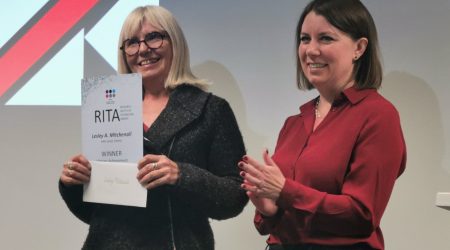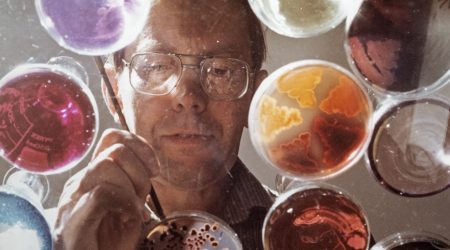Professor Robert (Bob) Crabtree has enjoyed an illustrious scientific career, mostly spent at Yale University, publishing over 700 papers and being cited over 53,000 times.
Bob is a member of the JIC alumni network (see page 23 for more information) and following a call for memories and stories, he got in touch to let us know how his time at the Nitrogen Fixation Unit influenced his career.
Coming from a scientific background – an ancestor of Bob’s, William Crabtree (1610-1644), was one of only two people to have observed the 1639 transit of Venus across the face of the Sun, the first for which records are known. Perhaps as a result, he is naturally curious about the world around him.
Initially, his interests lay in coordination chemistry and transition metal organometallic chemistry. This led him to the coordination chemistry of nitrogen fixation, which saw him move to the Nitrogen Fixation Unit in 1970, then at the University of Sussex and later integrated into the John Innes Institute, where he worked under Professor Joseph Chatt until 1973.
It was during this time that the direction of Bob’s long career was set, thanks to an innocuous discussion with Chatt and colleagues at one of the regular lab get-togethers over a hot drink. He explains: “The work on nitrogen fixation was then advancing so quickly that one of the lab staff members speculated that the nitrogen fixation problem might soon be solved.
Perhaps worried about the stability of his job, a second participant asked Chatt what would happen to the unit if the problem were indeed to be solved. “Chatt assured the whole group that in such a case he had a backup problem ready: transition metal mediated reactions of alkane C-H bonds, building on work he had carried out in the 1960s at the Imperial Chemical Industries’ central research laboratories. I made a mental note of this, and the area, indeed, became a signature one for me during my years on the faculty at Yale.”
Bob’s new direction was set and, after graduating, he spent four years at CNRS in France before he moved in 1977 to an Assistant Professorship at Yale University on the recommendation of his former tutor and mentor Professor Malcolm Green.
Bob recalls that during his last days in France, Roald Hoffmann visited the institute and had discussions with a number of individual staff members, including Bob: “On learning of my move to Yale, Roald remarked that I ‘would have to do something spectacular’ to get tenure there. This comment made me rethink my plans and reminded me of Chatt’s teatime comment.”
The first projects Bob worked on at Yale involved alkene hydrogenation and the more challenging reverse process, alkane dehydrogenation. Bob also worked on rhodium and iridium hydrogenation and hydroformylation catalysts, including one that would later become known as the ‘Crabtree catalyst’ – a homogeneous catalyst for hydrogenation and hydrogen-transfer reactions, after some of its special properties for hydrogenation had become clear.
Another topic that attracted his attention was hydrogen storage, an idea that sprung from the Bob Crabtree at a conference in Venice likely future rise of a solar-hydrogen-electric economy. Bob proposed electrocatalytic oxidation of hydrogenated heterocycles as a means of extracting electrical energy from the hydrogen stored in these organic compounds, which made him realise that electrocatalysis had a big future.
Bob’s career has been marked by a series of new avenues of interests opening up and his willingness to explore where they lead. He explains: “From the point of view of the sociology of science, my experiences illustrate both the value of informal gatherings of researchers, such as the afternoon teas, as well as that of working for someone of Chatt’s vision, as well as a natural curiosity about the world around you.”
Bob retired in 2021, but in spite of giving up his lab space, has continued to collaborate on an advisory basis with the Solar Group and on a more minor level, with his colleagues at Yale.




